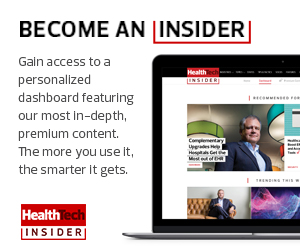By lowering costs and boosting efficiency, the Nutanix Enterprise Cloud gives Luminis Health “the ability to do more with less.”
The most critical benefit of Nutanix Enterprise Cloud has been increased reliability, which leads to smoother workdays for Luminis Health clinicians, Nolte says. By consolidating onto fewer systems, the organization eliminated some costs associated with paying vendors with overlapping functionality.
“Our IT team also feels that they’re able to deliver faster results without as much outside support, and that counts for a lot,” says Nolte. “We also get all the traditional benefits of consolidation, less consumption of power and cooling, reduced licensing cost across a smaller hardware footprint — the ability to do more with less.”
INSIDER EXCLUSIVE: Watch a CDW Bring IT On session for tips to plan your digital transformation roadmap.
Virtualization Makes it Possible to Streamline Applications
Data security is the top priority at Jefferson Health, but a close second is system simplification, says Nassar Nizami, executive vice president and CIO of the organization, which operates 14 hospitals and more than 40 outpatient facilities in the greater Philadelphia area.
“Our mantra is to reduce, eliminate and consolidate wherever we can,” he says. “We want to reduce duplicate applications and the supporting infrastructure. We’re also actively promoting an organizationwide push for standardization, which really resonates with clinicians.”
Streamlining isn’t easy, however. The recent task of moving to one electronic medical record system meant eliminating close to 150 systems and subsystems while ensuring that functionalities were retained, Nizami says. Removing legacy systems reduced longtime complexities and risks — and saved money.
Jefferson Health used a VMware suite of software, including VDI for endpoint, WorkSpace ONE for remote access and vCenter for compute and storage virtualization to implement its Epic EMR. The efforts were part of a strategy to virtualize applications and move them to the Microsoft Azure cloud platform.
“The cloud is a critical part of our efforts to streamline — almost all our apps and infrastructure are moving to the cloud,” Nizami says. “Virtualization is key to enabling that strategy.”
The transition involved several years of planning with the implementation of a virtual private cloud architecture that positions the organization to move workloads where best suited from a performance, stability and efficiency perspective.
Consolidation in the cloud has improved efficiency and strengthened Jefferson Health’s failover and business continuity capabilities, Nizami says. Virtualization allows the IT staff to spin up virtual systems quickly; cloud applications provide flexibility and speed implementation of services.
“Our customers are seeing better quality services, and the transitions to the services are becoming more seamless,” he says.












